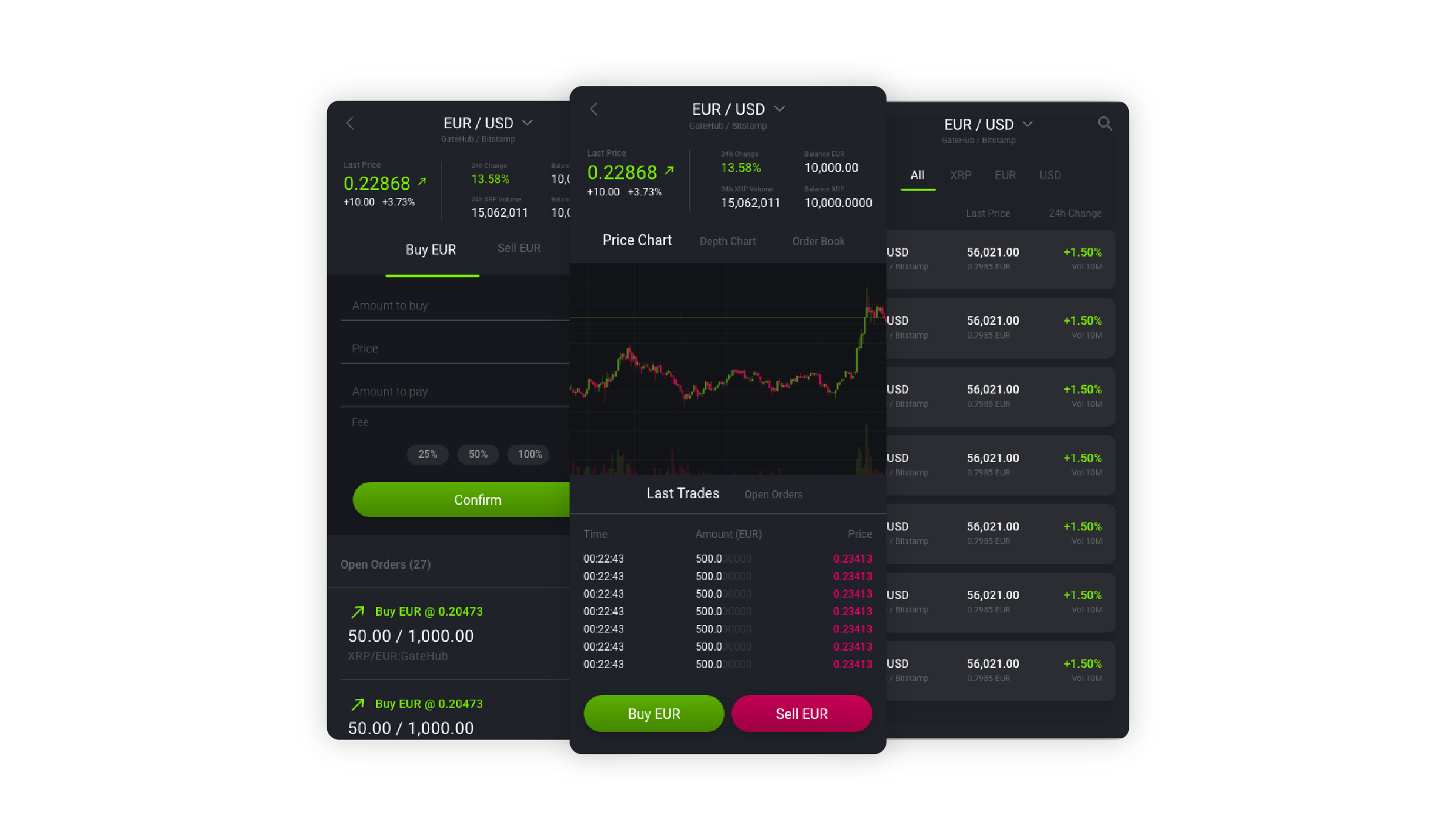As you know by now the XRPL has a built in decentralized exchange that lets users trade XRP with any other currency on the network. The XRPL was one of the first networks to feature a decentralized exchange. The exchange is completely permissionless so anyone can trade whatever they like.
We are working with XUMM to enable trading for all users of their non-custodial wallet.
What is decentralized exchange and non-custodial trading?
They basically mean the same thing. Both stand for the situation where users own their wallet’s private keys and interact with an exchange mechanism that is open for everyone to participate in any manner they like (as long as it’s within the rules of the system). Some examples of a DEX are Uniswap, Curve and the XRPL native DEX.
A decentralized exchange (DEX) is a permissionless service that is not controlled by any party. GateHub is often called an exchange but that does not tell the whole story. In this blog we will be using DEX to describe the XRPL’s native trade function.
Non-custodial wallets simply mean that users possess the wallet’s private keys that are used to create transactions on the blockchain or on the Ledger in XRP’s case.
Non-custodial trading means that users are utilizing their own blockchain wallets to make trades on a decentralized exchange. A blockchain (XRP Ledger) wallet is required to participate in the XRPL DEX.

Where can I use a DEX?
That’s easy! All trading on GateHub happens on the DEX, so any time you trade on GateHub, you are actually interacting directly with the XRPL.
There is a catch though. The DEX is accessible to anyone and is under no control by GateHub whatsoever. This means that other services can utilize the same trade mechanism. For example, Sologenic recently launched their trading app, which utilizes the XRPL DEX. When trading on GateHub, you might encounter traders that are utilizing a different app like Sologenic or XUMM. This is what true decentralization looks like.
This also means that as a GateHub user, you are not limited to trading only GateHub currencies but also any other currency (IOUs) on the network. This works in a very similar way to Ethereum’s DeFi, where Ether (ETH) and ERC20 tokens can be traded directly on Ethereum via smart contracts. Of course there are technical differences but the user experience is more or less the same. We should note here that XRPL transactions are much, much faster and cheaper than Ethereum transactions with finality in 3 to 4 seconds.
Warning: There are worthless and unbacked currencies that exist on the XRPL. You should only trade and create trust lines for currencies by known and reputable issuers.
Here is where things get even more exciting. XUMM offers a non-custodial interface for managing your XRPL wallets. This summer, GateHub will offer a trading interface (xApp) to all XUMM users without limits. The trade interface features charts and order books just like you know and love on GateHub. You can create new trade offers and sign them with your XUMM app all without ever revealing your private keys to anyone.

Why did we decide to do it?
The XRPL is a decentralized and open network full of possibilities. The XRP Ledger is one of the fastest and cheapest networks for small and large transactions. It offers a simple way of adding any kinds of assets on the Ledger (even simpler than Ethereum). Finally it supports some advanced features like the DEX, trust lines, escrows etc.
Our goal with a shared DEX interface is to drive adoption of the XRPL at large and boost the visibility and the awareness of some of the XRPL’s amazing features.
Did you know that you can protect and insure your XRPL wallet with multisignature and theft cover up to $100k?
Learn more